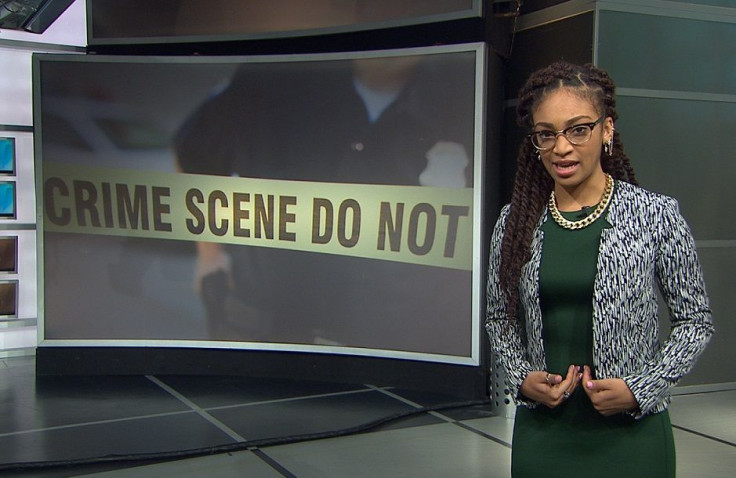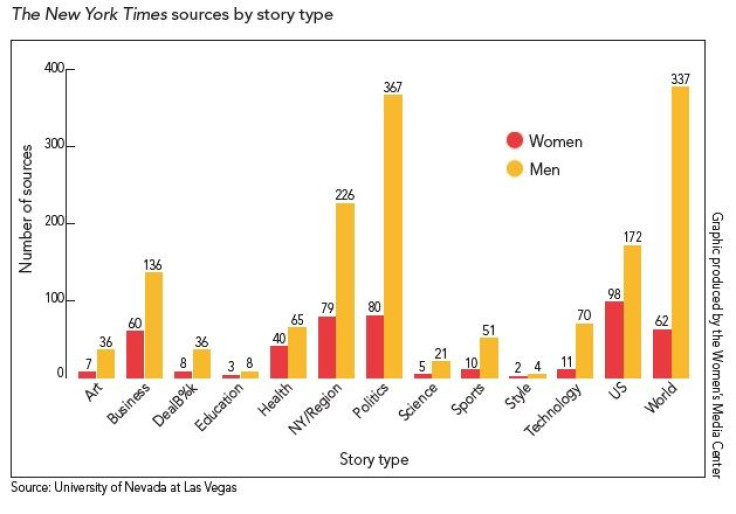Women In News Media: Gender Diversity Stagnant In Newsrooms, Horrendous In Sports Journalism, Says New Report

Sports journalism is mostly a white boys’ club, and if you want to get quoted in the New York Times, use a male name.
Those are some of the vexing takeaways from the “Status of Women in the U.S. Media 2014,” the annual report released by the Women’s Media Center, which tracks the depiction, participation and representation of women across various areas of journalism and entertainment.
Released on Wednesday and comprising statistics from numerous news outlets and advocacy groups, the 67-page report is an amalgam of stubbornly persistent statistics coupled with occasional hints of progress. Where women media professionals have made inroads in some disciplines, their representation has flat-lined or even regressed in other areas.
For women journalists, the sports beat continues to present the “bleakest of realities,” as WMC’s president, Julie Burton, put it in the report’s foreword. Citing data from the Institute for Diversity and Ethics in Sport and the Associated Press Sports Editors, the report shows that 90 percent of sports editors are white males. The institute looked at sports editors at more than 150 newspapers and websites, giving those outlets an “F” for their hiring of women and a “C+” for their hiring of minorities. Two exceptions were ESPN and Sporting News, which are described as being responsible for “the bulk of female hires in sports departments.”
“In light of the Olympics, I think it’s interesting to note the report finds that sports news coverage remains overwhelmingly white and male, even as women’s sports and women sports fans are surging,” Burton wrote.
In the shrinking print industry, gender diversity has been mostly stagnant for more than a decade. Data from the American Society of News Editors shows that, overall, newsroom staffs at daily newspapers shrank 6.4 percent in 2013. The percentage of women staffers has stayed at around 36 percent since 1999.
That picture, meanwhile, is evident on both sides of the news ecosphere. Statistics from the University of Nevada, which looked at 2,411 front-page articles in the New York Times, showed that women were quoted as sources only 19 percent of the time. It’s a similar story in broadcast news, where white males are the most-frequent guests on Sunday morning talk shows, representing 64 percent of analysts on Sunday-morning roundups. One outlier in that area is MSNBC’s “Melissa Harris-Perry Show,” where 67 percent of the guests were nonwhite in 2013.

There's other encouraging data in the report as well. In radio journalism, for instance, the number of women jumped 8 percent from 2012 to 2013, narrowing a gender gap that has proven stubbornly persistent. And yet no women, the report notes, placed in the top 10 on Talker magazine’s “Heavy Hundred” list.
Citing a few notable achievements -- including progress in digital media and the 2011 appointment of Jill Abramson as the first female executive editor of the New York Times -- Burton concludes nevertheless that “the American media have exceedingly more distance to travel on the road to gender-blind parity.”
The nonprofit WMC was founded in 2005 by Jane Fonda, Gloria Steinem and Robin Morgan. The group monitors sexism in media and aims to raise the profile and decision-making power of women working in the industry.
Got a news tip? Email me. Follow me on Twitter @christopherzara.
© Copyright IBTimes 2024. All rights reserved.












